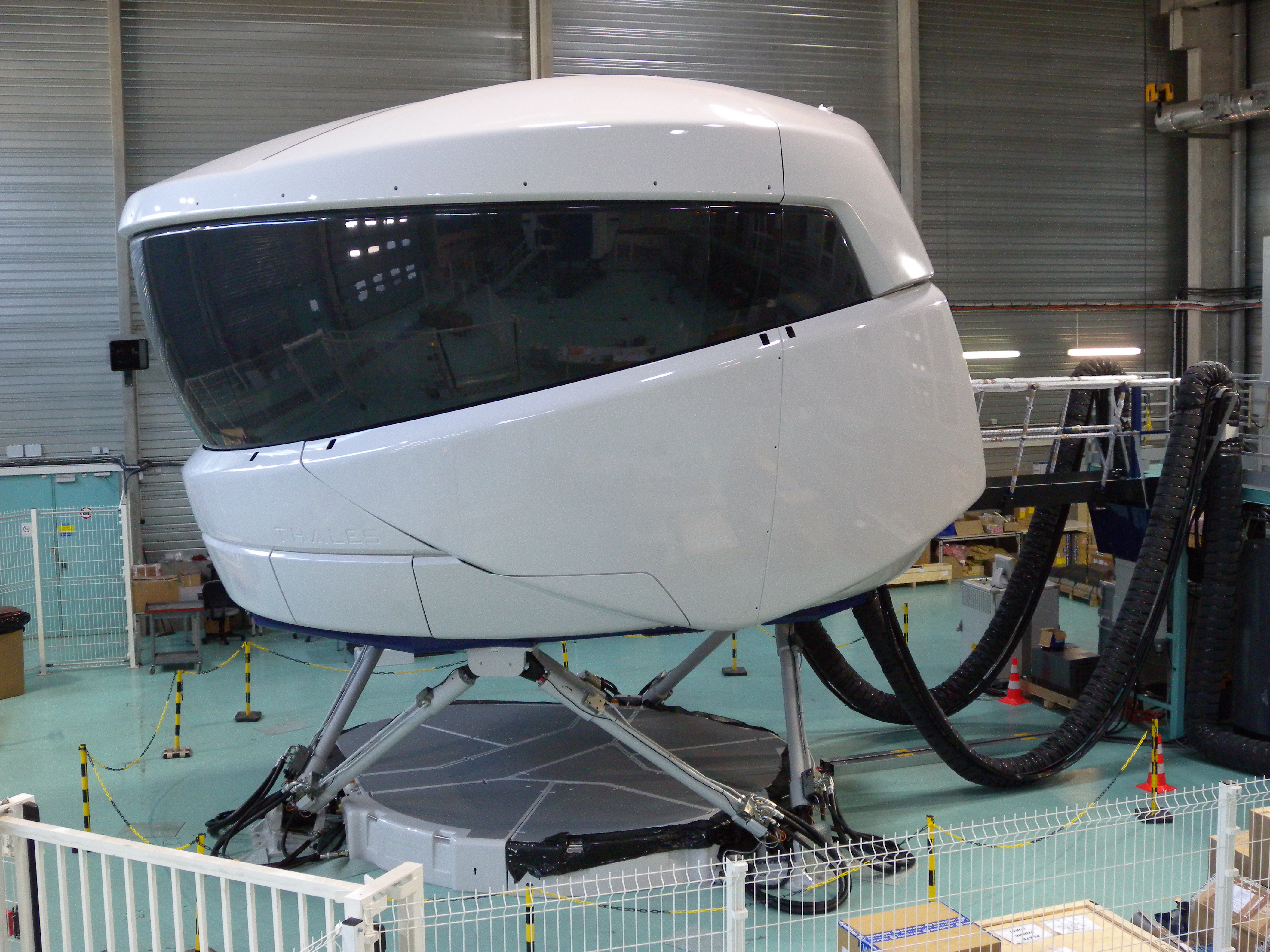The Best Motion Simulators Important Questions Answered!
Embarking on a journey into the world of motion simulators opens the door to an exhilarating realm where technology and imagination collide. From virtual reality adventures that blur the lines between fiction and reality, to training simulations that push the boundaries of experiential learning, motion simulators have evolved into a captivating domain with widespread applications. Whether you’re an enthusiastic gamer, a professional seeking immersive training, or simply curious about the technology’s inner workings, this exploration of the best motion simulators is designed to unravel the most pertinent questions surrounding this dynamic field. In this comprehensive guide, we delve into the intricacies of motion simulator technology, its diverse applications, and its potential impact on various industries. So, fasten your seatbelts as we embark on a journey through the exciting world of motion simulators, where curiosity leads and thrilling experiences await!
- What is a motion platform or motion simulator?
- How do motion platforms work?
- What are the different types of motion platforms?
- What are the benefits of using a motion platform?
- What are the drawbacks of using a motion platform?
- How much does a motion platform cost?
- What are the best motion platforms on the market?
- Can motion platforms be used for training purposes?
- How realistic is the motion on a motion platform?
- What are the safety considerations when using a motion platform?
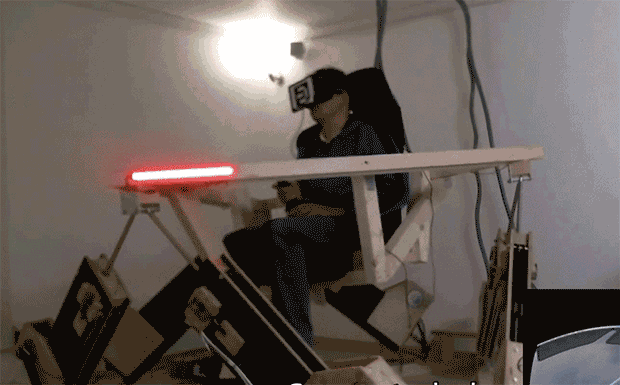
What is a Motion Platform or Motion Simulators?

A motion platform, also known as motion simulators, is a device that reproduces the movement of a vehicle or other object in a virtual or real environment. The platform consists of a base, on which a passenger or a pilot sit, and several mechanisms that move it in different directions, such as up and down, left and right, or back and forth. Motion platforms are used in various applications, such as flight and driving simulators, theme park rides, and virtual reality experiences. They enhance the realism of these experiences by providing physical feedback to the user, making them feel as if they are actually in the environment being simulated.
There are different types of motion platforms, including hexapod, Stewart, and serial link mechanisms. These platforms use electric motors or hydraulic actuators to move the passenger in response to the inputs received from the simulation software. Motion platforms have several benefits. They provide a safe and controlled environment for training pilots and drivers, reducing the risk of accidents and injuries. They also allow for the testing and development of new vehicles and equipment without the need for physical prototypes. Additionally, they offer an immersive experience for entertainment purposes, providing users with a thrilling and realistic ride.
Overall, motion platforms are an exciting technology that allows us to experience a range of virtual and real environments in a safe and controlled way.
How do motion simulators work?

Motion platforms are devices that are used to simulate movements in different directions and orientations. They are commonly used in the entertainment industry, such as in theme park rides, flight simulators, and driving simulators. These platforms can provide a more immersive experience for users by creating a sensation of movement and enhancing the realism of the simulated environment. The basic principle behind motion platforms is the use of actuators to generate motion. An actuator is a device that converts energy into motion. In a motion platform, hydraulic or electric actuators are typically used. The actuators are mounted between the base of the platform and the platform itself. By controlling the movement of the actuators, the platform can be made to move in a variety of ways.
The movements generated by motion platforms can be categorized into six degrees of freedom: roll, pitch, yaw, surge, sway, and heave. Roll, pitch, and yaw refer to rotations around the X, Y, and Z axes, respectively. Surge, sway, and heave refer to translations along the X, Y, and Z axes, respectively. By combining these different movements, motion platforms can simulate a wide variety of experiences, such as a roller coaster ride or a flight through turbulence.
In addition to the actuators, motion platforms also include sensors and controllers. The sensors are used to detect the current position and orientation of the platform, while the controllers use this information to calculate the appropriate movements for the actuators. The controllers can be programmed with different motion profiles to create a variety of experiences.
In summary, motion platforms work by using actuators to generate movements in different directions and orientations. These movements are controlled by sensors and controllers to create a realistic and immersive experience for users.
What are the different types of Motion Simulators?
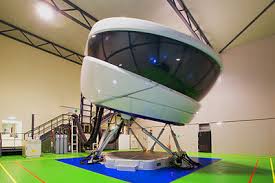
Motion platforms, also known as motion simulators or motion bases, are used in various industries such as entertainment, aviation, automotive, and military training to simulate movements and sensations. These platforms can create a variety of motions, from simple linear movements to complex multi-axis rotations, which can enhance the immersive experience for users. In this blog post, we will discuss the different types of motion platforms.
- Electric actuators: These motion platforms use electric actuators, which are essentially motors that move a load. They can be used for both linear and rotational movements, making them suitable for a variety of applications.
- Hydraulic platforms: Hydraulic platforms use hydraulic cylinders to create motion. They are often used for large-scale simulators, such as those used in aviation and military training.
- Pneumatic platforms: Pneumatic platforms use compressed air to create motion. They are often used for smaller simulators, such as those used in video games or virtual reality experiences.
- Stewart platforms: Also known as hexapods, Stewart platforms use six hydraulic or electric actuators to provide six degrees of freedom. They are commonly used in flight simulators and automotive testing.
- Gimbals: Gimbals are devices that allow for rotational movement around multiple axes. They are often used in camera stabilization systems and virtual reality experiences.
In conclusion, motion platforms come in various types and sizes, each with its unique features and advantages. The choice of the motion platform will depend on the specific application, budget, and desired level of immersion.
What are the Benefits of using a Motion Platform?
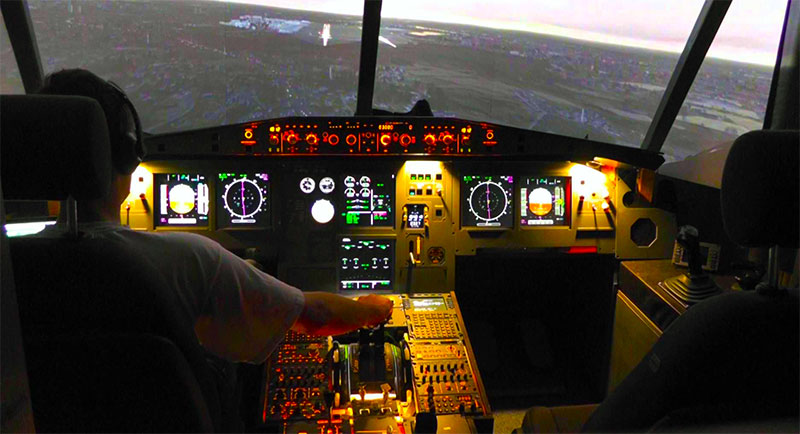
A motion platform is a device that simulates movement and provides a realistic experience for users. They are commonly used in gaming, flight and driving simulators, and virtual reality applications. The benefits of using a motion platform are numerous, and they can enhance the user’s experience in many ways. Firstly, motion platforms provide a more immersive experience. By simulating movement, users can feel like they are actually inside the game or simulation, making the experience much more engaging and realistic. This can be especially beneficial for training purposes, such as flight simulators, where users need to learn how to operate complex machinery in a safe environment.
Secondly, motion platforms can provide physical feedback to users. This can help users develop their muscle memory and improve their skills in the simulation. For example, in a racing simulator, the motion platform can provide feedback on the car’s handling, which can help the user improve their driving skills. Thirdly, motion platforms can provide health benefits. They can help users improve their balance, coordination, and reaction time, which can be beneficial for older adults or those with physical disabilities. Additionally, using a motion platform can provide a low-impact form of exercise, which can be beneficial for those who have difficulty with traditional forms of exercise.
In conclusion, the benefits of using a motion platform are numerous. They can enhance the user’s experience, provide physical feedback, and provide health benefits. As technology continues to advance, motion platforms will likely become even more advanced and widespread, providing users with an even more realistic and immersive experience.
Get Your VR HERE!
What are the drawbacks of using a Motion Simulators?
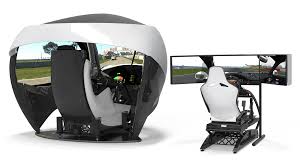
Motion platforms, also known as motion simulators, are popular in the entertainment, gaming, and training industries. They are designed to provide a realistic simulation of motion, allowing users to experience the feeling of acceleration, deceleration, and other physical sensations. While motion platforms have many benefits, such as providing an immersive experience and improving training effectiveness, there are also several drawbacks that should be considered. One of the main drawbacks of using a motion platform is the cost. Motion platforms can be quite expensive, and this can be a significant barrier to entry for many individuals and organizations. The cost of a motion platform depends on several factors, including the size, complexity, and quality of the platform. Smaller, simpler platforms can be purchased for a few thousand dollars, while larger, more advanced platforms can cost hundreds of thousands of dollars.
Another drawback of motion platforms is the potential for motion sickness. Motion sickness occurs when the motion of the platform is not synchronized with the user’s visual and vestibular systems. This can result in symptoms such as nausea, dizziness, and headaches. While motion sickness can be mitigated by properly synchronizing the platform’s motion with the user’s sensory inputs, it is still a potential risk that should be considered. Motion platforms can also be quite loud, especially when they are in operation. This can be a problem in environments where noise is a concern, such as in residential areas or in training facilities where multiple platforms are in use. Additionally, the noise generated by the platform can be a distraction for users, reducing their ability to focus on the task at hand.
Finally, motion platforms require a significant amount of space, both in terms of the physical space they occupy, and the space required for their operation. Large platforms may require dedicated facilities or rooms, which can be difficult and expensive to obtain. Additionally, the platforms themselves may be difficult to transport, limiting their usability in certain situations.
In conclusion, while motion platforms have many benefits, they also have several drawbacks that should be considered. These include the high cost of the platforms, the potential for motion sickness, the loud noise generated by the platforms, and the significant amount of space they require. These factors should be carefully weighed against the benefits of using a motion platform before making a decision to purchase or use one.
How much does a Motion Platform Cost?

A home motion platform is a type of simulator that provides a realistic experience of motion, typically used for gaming or simulation purposes. The cost of a home motion platform varies widely depending on the type of platform, the degree of motion it provides, and its features. Generally, a basic motion platform can cost anywhere from $1,500 to $5,000, while more advanced models can cost up to $50,000 or more.
One popular example of a basic home motion platform is the DOF Reality H2, which costs around $2,400. It features two degrees of freedom (DOF), which means it can tilt and shift in two directions, and is compatible with a range of gaming and simulation software.
A mid-range option is the Next Level Racing Motion Platform V3, which costs around $5,500. It features three DOF, allowing for more realistic movement, and is compatible with a range of racing and flight simulation games.
For those looking for a more immersive experience, the SimXperience Stage 5 Motion Simulator is a high-end option that costs upwards of $45,000. It features six DOF, allowing for complete freedom of movement, and is used by professional racing teams and simulation centers.
Overall, the cost of a home motion platform varies widely depending on the features and level of immersion desired. Those looking for a more basic experience can expect to pay around $2,000, while those seeking the ultimate in realism may need to budget upwards of $50,000 or more.
What are the best motion platforms on the market?
Motion platforms are used in various industries such as entertainment, simulation, training, and research. They provide a realistic and immersive experience by simulating motion and movement. There are several motion platforms available in the market, each with its own unique features and specifications. In this article, we will discuss some of the best motion platforms on the market.
- D-BOX: D-BOX is a popular motion platform that provides a highly realistic and immersive experience. It uses advanced technology to simulate motion and movement in real-time. D-BOX is commonly used in the entertainment industry for movie theaters, gaming, and virtual reality experiences.
- SimXperience: SimXperience is a motion platform designed for use in simulators. It provides a realistic driving experience by simulating motion and movement based on the input from the simulator. SimXperience is commonly used in racing simulators and flight simulators.
- MotionSystems: MotionSystems is a motion platform designed for use in industrial applications such as training and research. It provides high-precision motion control and can simulate a wide range of movements.
- Freedom 6: Freedom 6 is a motion platform designed for use in military training simulators. It provides a highly realistic and immersive experience by simulating the movement of vehicles and aircraft.
- CXC Motion Pro II: The CXC Motion Pro II is a motion platform designed for use in racing simulators. It provides a highly realistic driving experience by simulating motion and movement based on the input from the simulator.
In conclusion, there are several motion platforms available in the market, each with its own unique features and specifications. The best motion platform for you will depend on your specific needs and requirements. It’s important to do your research and choose a motion platform that will provide the most realistic and immersive experience for your intended use.
Can Motion Platforms be used for Training Purposes?

Motion platforms have become increasingly popular in the field of simulation and training due to their ability to replicate realistic movement and provide an immersive experience for trainees. A motion platform is a device that can move in various directions and can simulate movement such as acceleration, deceleration, and turns. They can be used in a variety of training scenarios, including aviation, military, and motorsports.
One of the primary benefits of using motion platforms for training is the ability to replicate real-world scenarios in a controlled environment. For example, pilots can use motion platforms to simulate flying conditions, such as turbulence or engine failure, without putting themselves or others at risk. Military personnel can use motion platforms to simulate combat situations, such as vehicle rollovers or helicopter crashes, without endangering themselves or others.
Another benefit of motion platforms is the ability to provide trainees with immediate feedback. Trainees can experience the consequences of their actions in a safe environment, allowing them to learn from their mistakes without causing any harm. This can lead to more efficient and effective training and can help reduce errors and accidents in real-world scenarios.
In conclusion, motion platforms are an excellent tool for training purposes. They provide a safe and controlled environment to simulate real-world scenarios and can provide trainees with immediate feedback. As technology continues to improve, we can expect to see motion platforms become even more prevalent in training scenarios across a variety of industries.
How Realistic is the Motion on a Motion Platform?

Motion platforms are devices that simulate movements, vibrations, and sensations to provide an immersive experience to the user. These platforms are commonly used in flight simulators, racing games, amusement park rides, and other applications where a sense of motion is desirable. The realism of the motion on a motion platform depends on several factors, including the type of platform, the software controlling it, and the hardware used to generate the motion.
The most realistic motion platforms use hydraulic or electric actuators to simulate movement. These devices can create a wide range of motion, from gentle swaying to violent shaking, and can simulate acceleration, deceleration, and lateral forces. The use of high-quality sensors and feedback systems ensures that the motion is synchronized with the software and that the user experiences a seamless and convincing simulation.
The software used to control the platform is also a critical factor in determining the realism of the motion. The software must accurately model the physics of the simulated environment, including gravity, inertia, and friction. The software must also take into account the user’s inputs and the behavior of other objects in the environment to create a realistic and immersive experience.
Finally, the hardware used to generate the motion must be of high quality and precision. Motors, gears, and other mechanical components must be designed to withstand the stresses of repeated use and to provide accurate and consistent motion.
Overall, motion platforms can provide a highly realistic and immersive experience, especially when used in conjunction with high-quality software and hardware. However, the complexity of these systems means that they can be expensive and require careful maintenance and calibration to ensure optimal performance.
What are the Safety Considerations when using Motion Simulators?

 " rel='<a href="https://www.amazon.com/Next-Level-Racing-Motion-Platform-pc/dp/B01N7OI0OX?crid=1O1RDBVI1FKBS&keywords=flight+simulator+motion+platforms&qid=1682556637&sprefix=flight+simulator+motion+platform%2Caps%2C319&sr=8-3&linkCode=li3&tag=gunnie2023-20&linkId=d6063a2d81ee73a8913ac0f23b5d0de0&language=en_US&ref_=as_li_ss_il" target="_blank"><img border="0" src="//ws-na.amazon-adsystem.com/widgets/q?_encoding=UTF8&ASIN=B01N7OI0OX&Format=_SL250_&ID=AsinImage&MarketPlace=US&ServiceVersion=20070822&WS=1&tag=gunnie2023-20&language=en_US" ></a><img src="https://ir-na.amazon-adsystem.com/e/ir?t=gunnie2023-20&language=en_US&l=li3&o=1&a=B01N7OI0OX" width="1" height="1" border="0" alt="" style="border:none !important; margin:0px !important;" />'>
" rel='<a href="https://www.amazon.com/Next-Level-Racing-Motion-Platform-pc/dp/B01N7OI0OX?crid=1O1RDBVI1FKBS&keywords=flight+simulator+motion+platforms&qid=1682556637&sprefix=flight+simulator+motion+platform%2Caps%2C319&sr=8-3&linkCode=li3&tag=gunnie2023-20&linkId=d6063a2d81ee73a8913ac0f23b5d0de0&language=en_US&ref_=as_li_ss_il" target="_blank"><img border="0" src="//ws-na.amazon-adsystem.com/widgets/q?_encoding=UTF8&ASIN=B01N7OI0OX&Format=_SL250_&ID=AsinImage&MarketPlace=US&ServiceVersion=20070822&WS=1&tag=gunnie2023-20&language=en_US" ></a><img src="https://ir-na.amazon-adsystem.com/e/ir?t=gunnie2023-20&language=en_US&l=li3&o=1&a=B01N7OI0OX" width="1" height="1" border="0" alt="" style="border:none !important; margin:0px !important;" />'>
A motion platform is a type of technology that simulates motion in a variety of applications such as flight simulation, racing simulation, and virtual reality experiences. While these platforms can provide an immersive and exciting experience, there are several safety considerations that must be taken into account to prevent accidents and injuries. Here are some key safety considerations when using a motion platform:
- Stability: Motion platforms must be stable and securely anchored to the ground to prevent tipping or movement during operation. The platform’s base must be strong enough to support the weight of the user and the platform itself.
- Clearance: The surrounding area of the motion platform must be free from any obstacles or hazards that may interfere with its movement. The user must have enough clearance around the platform to move safely without the risk of injury.
- Speed and Intensity: Motion platforms must be operated within safe speed and intensity limits to prevent overexertion, dizziness, or motion sickness. Overexertion can lead to physical injuries, while dizziness and motion sickness can cause discomfort and disorientation.
- Safety Harness: A safety harness is an essential safety feature for motion platforms. It must be used correctly, adjusted to the user’s size and weight, and tightened to keep the user securely in place during operation.
- Emergency Stop: Motion platforms must have an emergency stop button that can be accessed easily in case of an emergency or malfunction.
- Maintenance: Regular maintenance and inspection of the motion platform are essential for its safe operation. This includes inspecting the hardware and software components, checking for wear and tear, and ensuring that all safety features are working correctly.
In conclusion, motion platforms provide an exciting and immersive experience, but safety must always be a top priority. It is essential to follow all safety guidelines, including stability, clearance, speed and intensity limits, safety harness, emergency stop, and regular maintenance to prevent accidents and injuries.
Buy Your Own Motion Platform!
If you have made it here, then with the information above answering the most. Common FAQ on motion simulators you may wish to dip a toe or jump right in and get your own motion simulator. If this is the case then check out the options below and begin a new adventure in extreme realism in your flight sim world! Congratulations and you will be the envy of many.
AUTHOR
Brendon McAliece is a multi-lingual expat who brings over three decades of flight simulator/PC building experience as well as over two decades of real-world jet fighter experience as a weapons/egress technician. He holds a sport pilot certificate giving him real-world flying experience. Hi travels have taken him from Europe to the Middle East, Asia and his home of Australia. He has a passion for travel, languages, Flight simulation as well as Guitaring and Coffee. You can read more in his blogs below.

Learn more @
DreamingGuitar.com – DreamingCoffee.com – LetsFlyVFR.com
Home – Blog – Shop – About
As an Amazon affiliate I may earn on qualifying sales.

